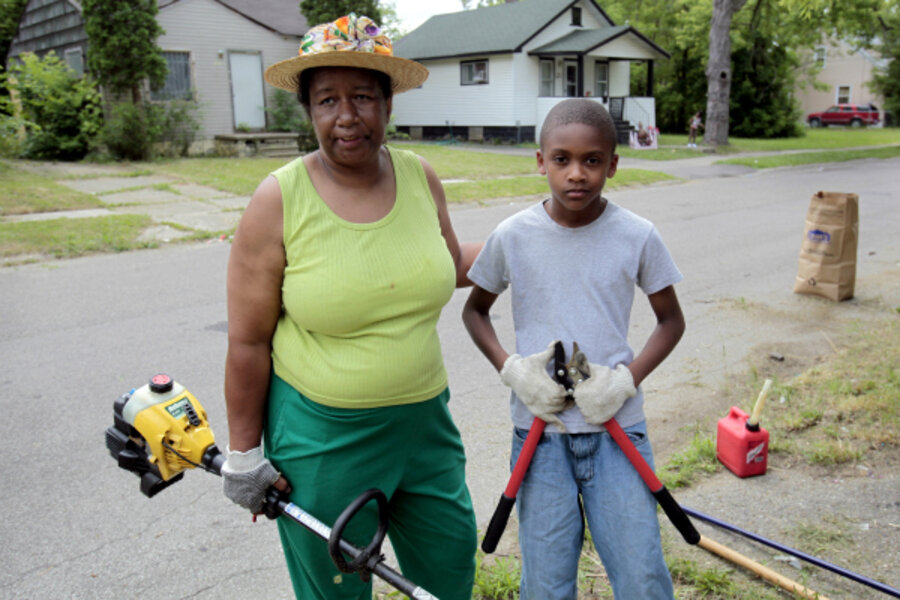Seeing 'vacant' lots as a community asset
Loading...
It’s easy to talk about the importance of the commons in grand terms – vast stretches of breathtaking wilderness, publicly funded advances in science and technology, essential cultural and civic institutions, the air and water which we all depend on for survival.
But let’s not forget the lowly commons all around that enliven and enrich our lives. Things like sidewalks, playgrounds, community gardens, murals, neighborhood hang-outs, and vacant lots. Especially vacant lots.
Modern society’s obsession with efficiency, productivity, and purposefulness sometimes blind us to the epic possibilities of empty spaces that aren’t serving any profitable economic function. The word “vacant” itself implies that these places are devoid of value.
IN PICTURES: Best and worst cities to live in
In many places today commoners are working to make sure that vacant lots can delight successive generations of kids.
But think back to all the imaginative uses you could discover for vacant land as a kid. In my neighborhood we squeezed a baseball diamond, 6-hole golf course, horseshoe pit, and vegetable garden (right behind the third base line) into the lot behind my house. My dad mowed the expanse of weeds every week, but it belonged to every kid in the neighborhood. All summer long, we’d gather there after breakfast to plot our adventures for the day.
In the back of my mind I always knew that someone else owned the land and that some sad day a house would rise where we swung five-irons on bumpy fairways and picked ripe cantaloupes, but I am so grateful it was ours for a while.
Thankfully, in many places today commoners are working to make sure that vacant lots can delight successive generations of kids.
Jonathan Rowe, who wrote with keen insight and love about the commons until his death last year, became a champion of shared public space in his town, Point Reyes, Calif., where several vacant lots on Main Street serve as social hubs for the community.
The 596 acres website offers detailed information on how to begin the process of turning vacant lots into community commons.
Rowe and his colleague Elizabeth Barnet of the West Marin Commons highlighted the importance of these privately owned spaces, and the threat that one day they may disappear from the public realm. Just a few months before his death, the group secured a long-term lease for land at the corner of Main and 4th, which is now commonly called Jon Rowe Park.
Even more ambitious is the 596 Acres project, which identified every last parcel of publicly owned vacant land in Brooklyn with an eye to opening them up to the community for gardens and informal parks. The project is now expanding across the city, and the 596 acres website offers detailed information on how to begin the process of turning vacant lots (including those now locked behind fences or privately owned) into community commons.
• Jay Walljasper is a contributing editor to YES! Magazine, author of All That We Share, a contributing editor to National Geographic Traveler, a senior fellow of the Project for Public Spaces, a contributor to Shareable.net, and editor of OnTheCommons.org, where this article originally appeared.
• This article appeared in YES! Magazine.
• Sign up to receive a weekly selection of practical and inspiring Change Agent articles by clicking here.







